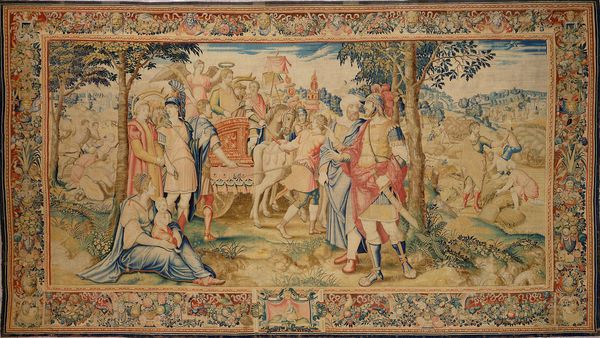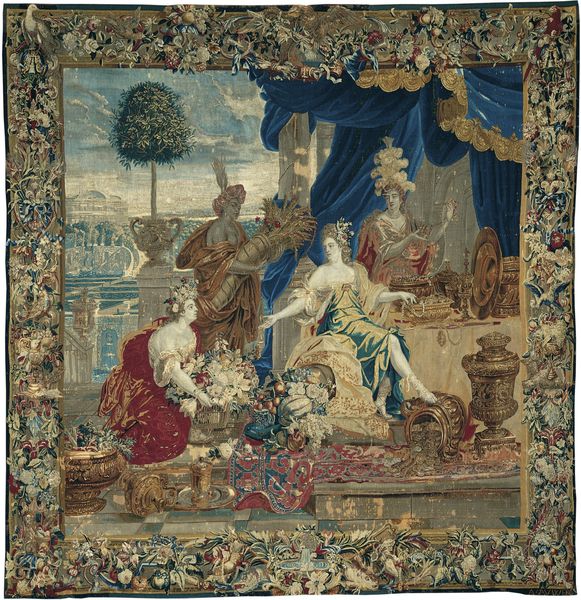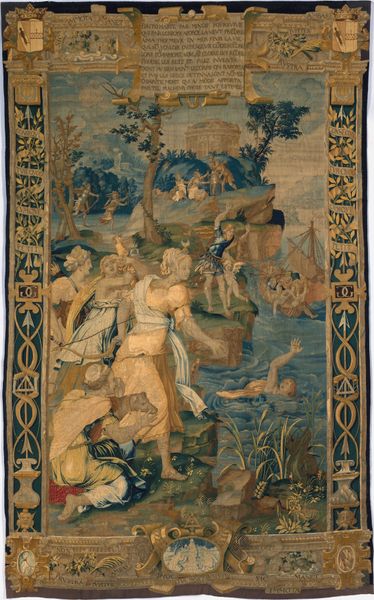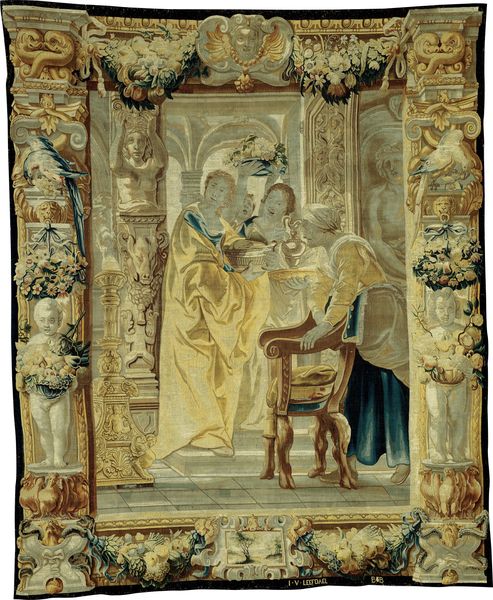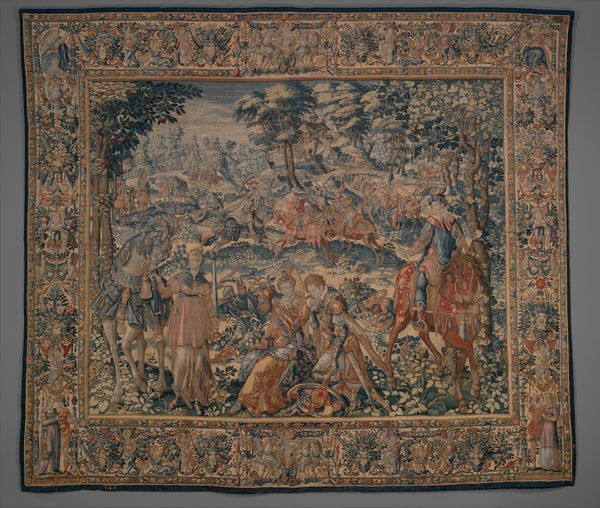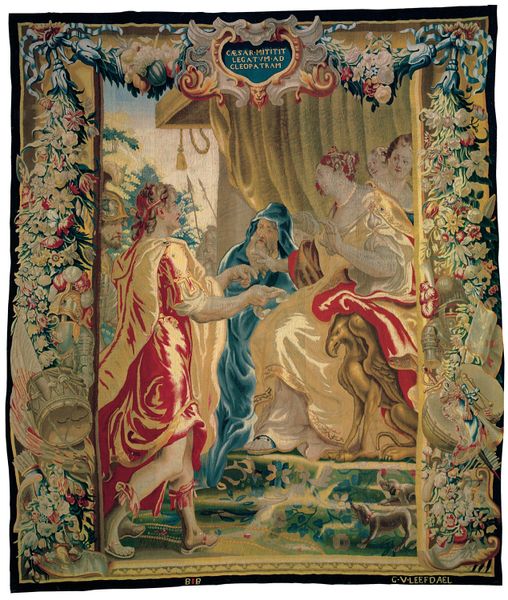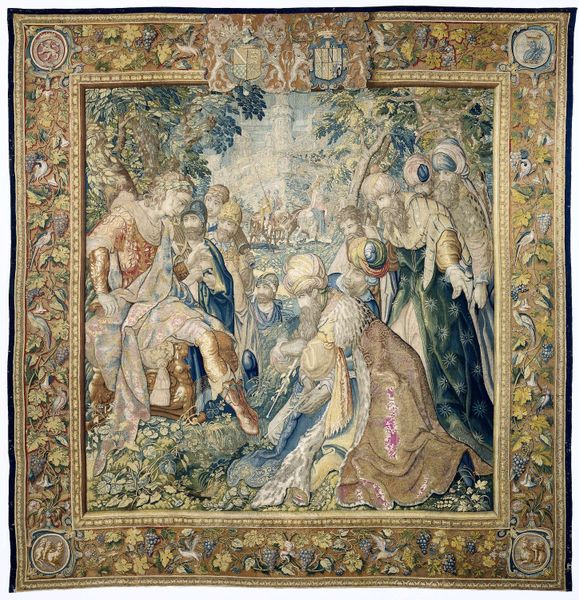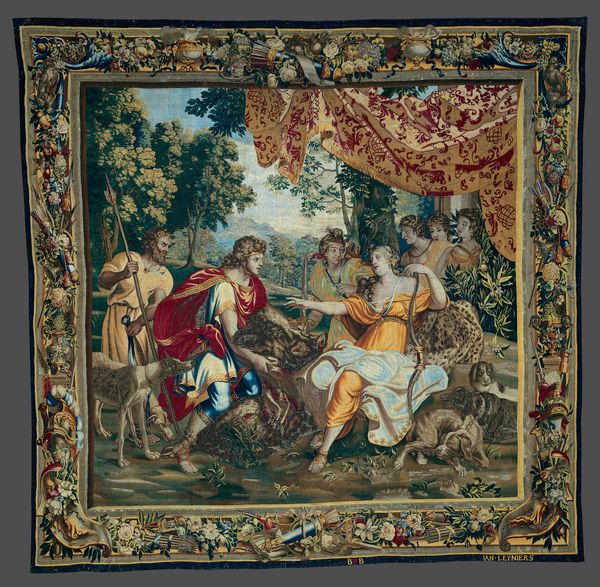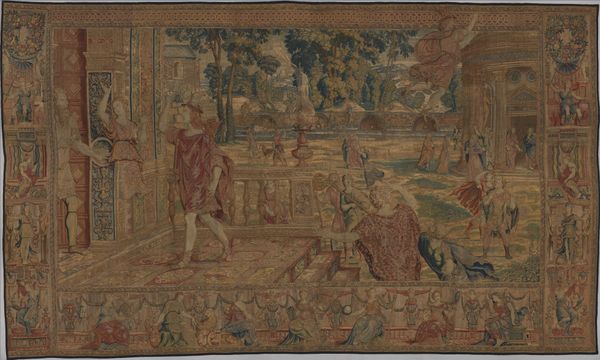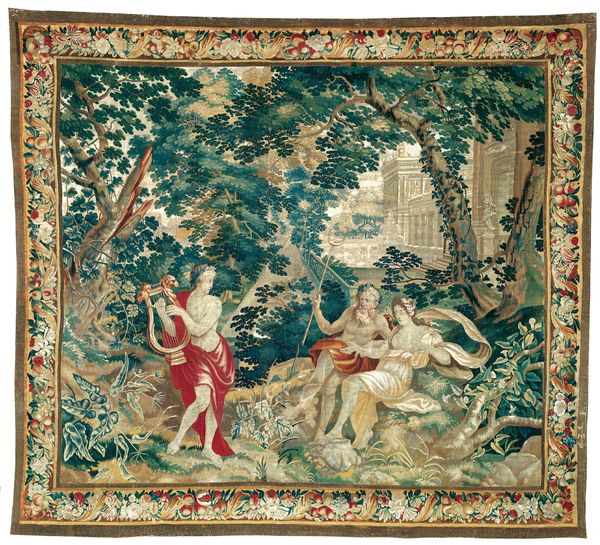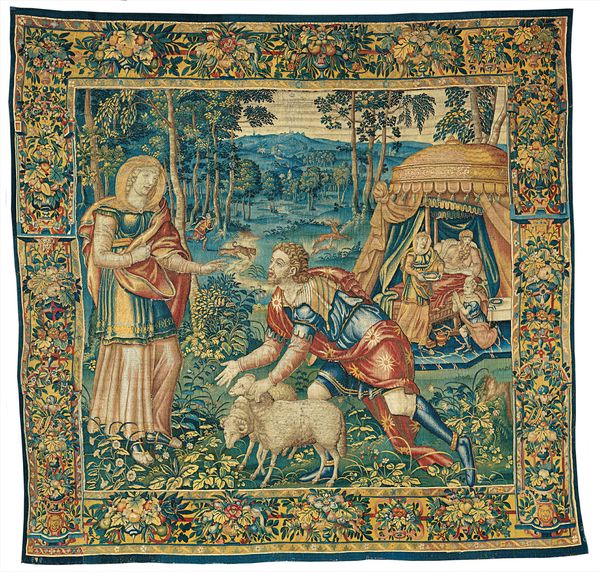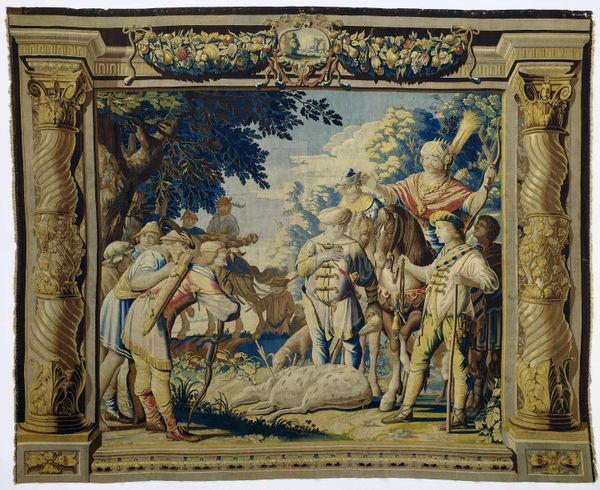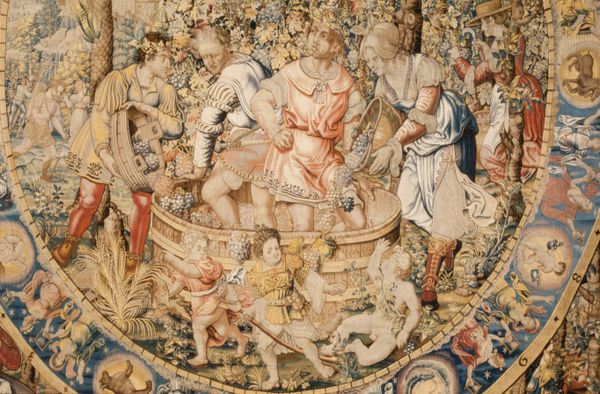
drawing, oil-paint, textile
#
portrait
#
drawing
#
medieval
#
narrative-art
#
animal
#
oil-paint
#
landscape
#
textile
#
mannerism
#
figuration
#
11_renaissance
#
oil painting
#
history-painting
#
decorative-art
Dimensions: H. 4 ft. 2 in. (1.27 m.), W. 5 ft. (1.52 m.)
Copyright: Public Domain
Curator: This textile hanging is "Adoration of the Kings," likely woven between 1525 and 1535 after a design by Bernard van Orley. The scene is rich in detail. What are your initial thoughts? Editor: I'm immediately struck by the opulence, the sense of overwhelming texture. The scene feels almost staged, like a Renaissance pageant intended to impress, doesn’t it? Curator: Absolutely. And consider who this was meant to impress. Tapestries such as these were powerful status symbols. They demonstrated wealth and taste. The history of tapestry as a medium speaks to complex socioeconomic and political narratives; the ownership, the display, and of course, the creation… Editor: Speaking of creation, I am intrigued by the representation of the Magi. Look at their attire! These aren’t simple shepherds, but rulers, perhaps reflecting the patrons for whom this was woven. In terms of the message, does it not tell us about power dynamics and the justifications used to uphold social order during this period? Curator: Precisely. These tapestries functioned as a form of visual propaganda, reinforcing the divine right of kings and the social hierarchy. Notice the floral border and the incorporation of classical architectural elements, which blend religious narrative with secular grandeur, reinforcing these established ideals. Editor: So, not just a beautiful scene, but an assertion of power through image and material. I'm particularly drawn to the representation of Mary and baby Jesus. Her posture, so serene despite the surrounding grandeur... It creates a fascinating contrast, challenging us to consider the multiple layers of meaning embedded within this textile. How does one reconcile a religious narrative that challenges existing power with this overt display of material wealth and the powers it holds? Curator: It highlights inherent tensions within systems of power. Art, in many ways, reveals and reflects on those disparities through carefully coded and constructed displays. Tapestries like these were tools to display ideologies and invite continued, often crucial questioning. Editor: This close looking reminds me to question, not just admire, the past. Thank you for the deeper understanding. Curator: It's in understanding art's roles that we equip ourselves to critique and build upon inherited narratives and beliefs.
Comments
No comments
Be the first to comment and join the conversation on the ultimate creative platform.
